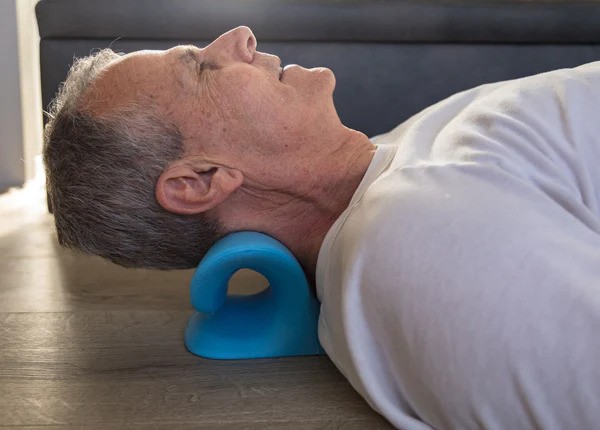
06 Jun Sleeping Comfortably with a Buffalo Hump: A Comprehensive Guide
A buffalo hump, medically known as dorsocervical fat pad, can cause discomfort and disrupt sleep. This abnormal fat accumulation on the upper back can make finding a comfortable sleeping position challenging. However, with the right strategies and adjustments, you can improve your sleep quality and alleviate discomfort. This article delves into understanding buffalo hump, its impact on sleep, and provides practical tips for a restful night.
Understanding Buffalo Hump
A buffalo hump is a noticeable hump of fat that develops on the back of the neck and upper shoulders. It is often associated with certain medical conditions like Cushing’s syndrome, medication side effects, or hormonal imbalances. The size and firmness of the hump can vary, but its presence can lead to pain, stiffness, and difficulty sleeping.

How Buffalo Hump Affects Sleep
The protruding hump can make it uncomfortable to lie flat on your back or side. The pressure on the hump can cause pain and disrupt your sleep cycle. Additionally, the hump may affect your posture and breathing, further contributing to sleep disturbances.
Practical Tips for Sleeping with a Buffalo Hump
- Choose the Right Mattress: A medium-firm mattress is generally recommended for individuals with a buffalo hump. It provides adequate support to the spine and prevents the hump from sinking too deeply, which can cause discomfort.
- Optimal Sleeping Positions:
- On Your Side: Sleeping on your side with a pillow between your knees can help maintain spinal alignment and reduce pressure on the hump.
- Elevated Head: Use a wedge pillow or elevate the head of your bed to alleviate pressure on the hump and improve breathing.
- Avoid Stomach Sleeping: This position puts additional pressure on the neck and back, exacerbating discomfort.
- Pillow Selection:
- Cervical Pillow: A cervical pillow with a neck contour can provide support to the neck and reduce strain on the upper back.
- Body Pillow: Placing a body pillow between your knees or hugging it can help maintain spinal alignment and relieve pressure.
- Stretching and Exercises:
- Neck Stretches: Gentle neck stretches before bed can help loosen tight muscles and reduce discomfort.
- Back Exercises: Strengthening your back muscles can improve posture and alleviate pressure on the hump.
- Pain Management:
- Over-the-Counter Pain Relievers: If pain persists, consult a doctor for appropriate pain management options.
- Medical Consultation:
- Underlying Conditions: If the buffalo hump is causing significant sleep disruptions or is associated with other symptoms, consult a doctor to rule out any underlying medical conditions.
- Treatment Options: Depending on the cause, treatments like medication, physical therapy, or even surgery may be recommended.
Additional Tips:
- Maintain a Healthy Weight: Losing weight, if overweight or obese, can help reduce the size of the hump and alleviate discomfort.
- Avoid Alcohol and Caffeine Before Bed: These substances can disrupt sleep and worsen discomfort.
- Create a Relaxing Bedtime Routine: A calming routine can help prepare your body for sleep and improve sleep quality. Establishing a consistent bedtime ritual can significantly enhance how to get rid of buffalo hump fast.
Important Considerations:
- Individual Variations: The effectiveness of these tips can vary depending on the size and firmness of the hump, as well as individual preferences.
- Consult a Doctor: It’s always best to consult a doctor for personalized advice and treatment options.
Conclusion
Sleeping with a buffalo hump can be challenging, but it doesn’t have to be a nightmare. By implementing the tips mentioned in this article and seeking professional guidance, you can improve your sleep quality, alleviate discomfort, and wake up feeling refreshed. Remember, consistency is key, and finding the right combination of strategies may take some experimentation. Prioritize your comfort and well-being, and don’t hesitate to seek help from healthcare professionals for a restful night’s sleep.


Sorry, the comment form is closed at this time.